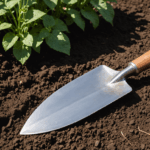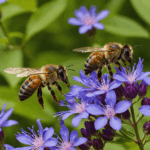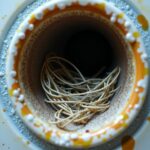Composting is an ancient, yet remarkably effective, process that transforms organic waste into nutrient-rich soil amendment, often referred to as “black gold” for its immense value to gardeners and the environment alike. Understanding the basics of composting is crucial for anyone who wishes to engage in organic gardening or plays an active role in promoting soil health.
At its core, composting involves the natural decomposition of organic matter through the action of microorganisms, including bacteria, fungi, and worms, which break down waste into simpler substances. These microorganisms require four key components to thrive: carbon, nitrogen, oxygen, and moisture. When these elements are balanced correctly, they work synergistically to convert kitchen scraps, yard waste, and other organic materials into compost.
The carbon-to-nitrogen ratio (C:N) is essential in the composting process. Carbon-rich materials, often referred to as “browns,” include items like dried leaves, straw, and wood chips, which provide energy for microorganisms as they break down organic matter. In contrast, nitrogen-rich materials or “greens” provide essential protein and include fresh grass clippings, vegetable peels, coffee grounds, and other lush scraps. A balanced compost pile typically maintains a C:N ratio of approximately 30:1, ensuring optimal microbial activity and efficient decomposition.
Another critical aspect of composting is maintaining adequate aeration and moisture levels within the compost pile. Oxygen is necessary for aerobic microorganisms to thrive, thus turning the compost regularly allows air to circulate throughout the pile. Adequate moisture, akin to a wrung-out sponge, supports the decomposers’ metabolic processes, preventing the compost from becoming too dry (which would slow decomposition) or too wet (which could lead to anaerobic conditions and foul odors).
To summarize, the basic principles of composting can be encapsulated in the following key components:
- Carbon-rich materials (browns): Provide energy and include materials like dried leaves, wood chips, and straw.
- Nitrogen-rich materials (greens): Supply protein and consist of green grass clippings, kitchen scraps, and coffee grounds.
- Aeration: Essential for aerobic microbial activity and can be achieved by turning the pile regularly.
- Moisture: Should be maintained at a level akin to a wrung-out sponge for optimal microbial performance.
For those exploring composting methods, understanding these basics ensures foundational knowledge which is instrumental in creating nutrient-rich compost that enhances soil health and supports sustainable gardening practices.
| Component | Role in Composting | Examples |
| Carbon-rich materials (Browns) | Provide energy for microorganisms | Dried leaves, straw, wood chips |
| Nitrogen-rich materials (Greens) | Supply proteins needed for decomposition | Grass clippings, fruit peels, coffee grounds |
| Oxygen | Supports aerobic decomposition | Ensured by regular turning of the pile |
| Moisture | Facilitates microbial activity | Maintain moisture akin to a wrung-out sponge |
By mastering the fundamentals of composting, individuals can play an essential role in organic gardening, contributing to healthier soils and a more sustainable environment.
Choosing the right composting method
Choosing the right composting method is a crucial step toward successful composting that will align with your lifestyle, space, and specific needs. Various methods cater to different settings, so it’s essential to evaluate which method suits you best. Here’s a step-by-step guide to help you choose:
1. Evaluate Your Space and Needs:
– Consider the size of your outdoor space. Do you have a large backyard, a small garden, or only a balcony?
– Determine the volume of kitchen waste and yard debris you produce weekly to choose a method that can accommodate it.
2. Select a Composting Method:
– Traditional Composting:
– Best for those with ample backyard space.
– Requires building a compost pile or using a compost bin.
– Ideal for processing a significant volume of waste including kitchen scraps and yard waste.
– Vermicomposting:
– Ideal for indoor settings or small spaces without outdoor areas.
– Utilizes worms, primarily red wigglers, to break down organic material.
– Produces nutrient-rich “worm castings,” excellent for enriching soil health.
– Bokashi Composting:
– Suitable for those with limited outdoor space.
– An anaerobic process using special Bokashi bran to ferment food waste.
– Can compost a wider range of kitchen scraps, including meat and dairy, without odors.
– Tumbler Composting:
– A good option for those needing a more controlled and less labor-intensive process.
– Compost bin with a rotating mechanism for easy aeration and faster compost production.
– Trench or Pit Composting:
– Simple method involving digging a trench or pit to bury compost material.
– Excellent for small garden spaces and requires very little maintenance.
3. Consider Maintenance and Time Commitment:
– Traditional Composting:
– Requires regular turning for aeration and can take several months to over a year to produce finished compost.
– Vermicomposting:
– Requires careful monitoring of moisture and temperature to ensure worm health, with materials breaking down in a few months.
– Bokashi Composting:
– Easy maintenance involves just adding bran and ensuring the bucket is sealed correctly, taking about two weeks to become pre-compost, which then needs soil processing.
– Tumbler Composting:
– Minimal labor with occasional spinning; quick results achieved in a few weeks to months.
– Trench or Pit Composting:
– Very low-maintenance but takes longer as it relies on natural soil organisms for decomposition.
4. Decide Based on Climate and Environment:
– Consider the climate you live in:
– Hotter climates might accelerate the composting process.
– Colder environments may require insulated bins to maintain microbial activity.
5. Assessing Material Types:
– If you have specific materials you want to compost, such as meat or dairy, Bokashi might be your choice.
– For garden waste like leaves and sticks, traditional composting works well.
By carefully assessing these factors, you can choose a composting method that integrates seamlessly with your lifestyle and maximizes your efforts toward organic gardening and enhancing soil health. Remember, no single method is superior to another; it’s about what works best for you.
What kitchen waste can be composted
When you embark on the journey of composting, understanding which kitchen waste items can be included in your compost pile is essential to ensure you generate nutrient-rich compost effectively. Not all kitchen scraps are suitable for composting, so distinguishing between the permissible materials and those to avoid will set you on the path to successful composting and enriched soil health.
Start by familiarizing yourself with nitrogen-rich materials, commonly referred to as “greens,” which play a crucial role in supplying the essential proteins needed for microorganism activity. Kitchen scraps such as fruit and vegetable peels, coffee grounds, tea bags (without any synthetic components), and green plant trimmings from indoor plants are all excellent additions to your compost heap. These materials decompose readily, providing the nitrogen necessary to feed the hardworking bacteria and fungi responsible for breaking down your organic waste.
In contrast, certain kitchen items are best avoided when composting due to their potential to attract pests or disrupt the microbial balance. Meat scraps, dairy products, and oils can produce odors that may attract unwanted visitors like rodents and insects. Additionally, these materials can take much longer to break down and can promote the growth of harmful bacteria, which can hinder the composting process. Avoid adding citrus peels and onion skins in excessive amounts, as their acidity can affect the pH balance, potentially disrupting the thriving microbial community that you have so meticulously cultivated.
Carbon-rich materials, commonly categorized as “browns,” complement the aforementioned greens by providing energy. While many browns come from yard waste, look around your kitchen for suitable items like cardboard (without excessive ink), used paper towels, napkins, and even crushed eggshells, which are a good source of calcium. Ensuring a proper carbon-to-nitrogen balance—typically aiming for a 30:1 ratio—fosters an environment where microorganisms flourish, accelerating the composting process and generating a more efficient breakdown of organic material.
Remember, diversity in your compost pile is key. The more variety you introduce, the broader the array of nutrients your finished compost will offer, creating a rich, fertile amendment for your garden beds. As you incorporate these principles into your composting routine, you’ll not only reduce household waste but also enhance your organic gardening practices, ultimately contributing to a more sustainable and vibrant garden. By mindfully selecting what kitchen waste to include in your compost, you’ll significantly influence the quality of the resulting compost, transforming what was once seen as waste into a valuable resource that rejuvenates and nourishes your garden soil.
How to maintain your compost pile
To ensure the success of your composting process, maintaining your compost pile is vital. This step involves more than just discarding scraps and walking away; it requires monitoring and nurturing to create an environment where decomposition can occur efficiently. Start by regularly turning the compost pile. This practice is critical as it introduces oxygen, which is essential for the aerobic bacteria responsible for breaking down organic matter. Use a pitchfork or compost aerator to turn the pile every two to three weeks. By doing so, you not only improve aeration but also distribute moisture evenly, enhancing microbial activity and expediting the composting process.
Moisture is another crucial factor to manage. Aim for a moisture level that resembles a wrung-out sponge—not too dry or too wet. If the pile becomes too dry, microorganisms will be unable to thrive, slowing down decomposition. On the other hand, if it’s too wet, the pile can become anaerobic, resulting in a smelly, sluggish process. To manage moisture levels, adjust your pile composition: if it’s too wet, add more carbon-rich materials such as straw or shredded paper. If it’s too dry, incorporate more nitrogen-rich scraps like fruit peels and grass clippings, or sprinkle water gently to maintain the ideal moisture balance.
Maintaining the right temperature is also essential, as heat is a natural byproduct of microbial activity, indicating that the composting process is taking place effectively. A healthy compost pile should feel warm to the touch in the center. Should the temperature drop significantly, consider adding more green materials to reignite microbial activity. Additionally, by having the right mix of materials and properly maintaining your compost pile, you help in achieving higher temperatures that enhance pathogen destruction and seed mortality, contributing to the overall soil health when the compost is applied.
A balanced carbon-to-nitrogen ratio is another piece of the puzzle. Make sure to monitor what you’re adding to avoid an imbalance that could slow down the process or produce unpleasant odors. If your compost tends to smell, it might mean there are too many nitrogen-rich materials. In this case, incorporate more carbon-rich elements, such as dried leaves or sawdust, to restore balance.
Lastly, be versatile and flexible with your composting approach, as external elements like season changes can affect the pile. During colder months, consider insulating the pile with straw bales or a tarp to maintain warmth. During warmer seasons, regular aeration and monitoring moisture levels can aid in keeping the process stable.
By consistently attending to these maintenance tasks, you enhance the decomposing efficiency, ensuring that your composting endeavor supports your organic gardening goals and contributes to better soil health. These efforts transform everyday kitchen waste into a valuable resource that enriches your garden, promoting a more sustainable interaction with your environment.
Using your finished compost in the garden
Once your compost is mature and ready to use, it’s time to harness its benefits in your garden. Begin by examining the compost; it should be dark, crumbly, and earthy-smelling, devoid of identifiable food scraps. This rich, finished product is your key to healthier plants and soil. When preparing garden beds, incorporate a generous layer of compost, about 2 to 4 inches thick, into the topsoil. This process not only enriches the soil with essential nutrients but also enhances its structure, improving aeration and water retention—critical factors for plant growth.
Compost can also serve as a fabulous top dressing for established plants. Simply spread a thin layer around the base of your plants, ensuring you don’t pile it against the stems or trunks, as this can cause rot. As a natural fertilizer, compost slowly releases nutrients, aiding in robust plant development throughout the growing season. This practice aligns perfectly with organic gardening principles, reducing reliance on chemical fertilizers and supporting overall soil health.
For potted plants and containers, mix compost with potting soil in a ratio of about 1 part compost to 2 parts soil. This blend provides a nutrient-rich medium that is vital for container gardening where soil is typically more constrained. Notably, compost also helps balance pH levels and supports beneficial microbial activity, creating a living soil environment that bodes well for thriving flora.
In addition to its nutritional benefits, compost serves as a natural mulch to suppress weeds and conserve soil moisture. Spread it between rows in vegetable gardens or around perennials to keep weeds at bay, thereby minimizing the need for chemical herbicides.
Rotating your compost applications through different areas of your garden, year by year, ensures that no single section becomes overly enriched, thereby maintaining a balanced ecosystem. Regularly using compost in this way enhances soil structure over time, encouraging robust root development and improving resistance to pests and diseases.
In summary, with thoughtful application, your compost becomes an invaluable asset, seamlessly integrating into your organic gardening practices. By enriching your soil, you not only foster vibrant plant growth but also contribute to a more sustainable and eco-friendly gardening routine. Transforming kitchen waste into garden gold underscores a commitment to environmental stewardship and reinforces the endless cycle of growth within nature’s delicate balance.










